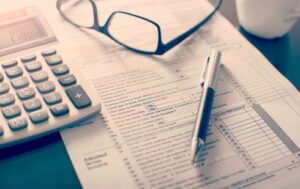In a nutshell about leasing
Leasing is a form of financing in which the lessor purchases an object only to give it to the lessee for use. This one, in turn, gains the right to use the object (usually a vehicle) in exchange for regular installment payments. At the end of the lease, the object can pass into the possession of the lessee – however, it is necessary to settle the amount of the vehicle’s buyout.
In the context of buying a car out of a lease, the key issue is to choose the right type of financing – because a buyout from an operating lease and a buyout from a finance lease are accounted for differently. In fact, there are more differences in the types of leasing themselves – all of which we discuss in our article: What is leasing and what are its types?
Buyout of a passenger car from an operating lease
In this article, we will focus on the issue of transferring ownership of a vehicle at the end of an operating lease agreement for the reason that this is the form of vehicle financing that companies choose most often. There are many reasons for this – lower upfront cost, ongoing generation of deductible expenses, ability to use a new vehicle without having to pay the full amount. Operating lease agreements always give the entrepreneur (lessee) the opportunity to buy back the vehicle, often on preferential terms.
However, special attention should be paid to whether you plan to buy the car out of the lease as part of your business or use a private buyout. These decisions will have different effects depending on whether the entrepreneur used the vehicle exclusively in business or also used it privately during the lease.
The process of buying a car out of a lease
At the time of the lease agreement, the parties determine the amount of the initial payment, the monthly installments and the buyout amount. The latter can range from 1% to as much as 45% of the vehicle’s value. Throughout the term of the contract, the lessee is obliged to pay regular installments. In the last month, instead of the standard installment, the entrepreneur transfers the buyout amount to the lessor’s account – this is when ownership of the car is transferred from the lessor to the lessee.
As soon as the final payment is made, the businessman should receive a VAT invoice from the seller – the leasing service has already ended, and now the delivery of goods is taking place.
The next step is to include the purchased car as a fixed asset of the company or recognize it as a one-time purchase. However, this will not always be the decision of the entrepreneur.
- We can recognize a vehicle buyout as a one-time expense only if the buyout amount does not exceed PLN 10,000 (net, if the entrepreneur is a VAT payer; gross, if he is not a VAT payer);
- Otherwise, the entrepreneur is required to enter the vehicle in the company’s fixed asset register. It also involves the obligation to depreciate the asset and create a depreciation schedule.
If the initial value of the bought-out vehicle is less than PLN 10,000, the entrepreneur has a choice – he can include the car as a fixed asset and opt for depreciation, but he can also include all the costs associated with the buy-out as a BUI on a one-time basis.
Important!
In determining the initial value, the purchase price of the vehicle, that is, the amount owed to the seller plus the cost of purchase minus deductible VAT, is used. If the purchase was made in foreign currency, exchange rate differences must also be taken into account.
Important!
We can’t always include all depreciation as a deductible expense. If a passenger car with a traditional internal combustion engine (gasoline, diesel, LPG, CNG) represents a value of more than PLN 150,000, we will include in our costs only a portion of the depreciation write-offs up to this amount. If the vehicle is an electric vehicle or runs on hydrogen, the limit rises to PLN 225,000.
Lease buyout scenarios for business or personal use
Scenario 1
In this option, the entrepreneur used the car privately and in business for the entire duration of the lease, and now decided to make a private buyout. This means that:
- cannot deduct the cost and VAT of the redemption invoice,
- can deduct 20% of costs and 50% of VAT on current expenses related to the use of the vehicle.
Scenario 2
In this option, the entrepreneur also used the car both privately and in business, but decided to buy the vehicle as part of the business. This means that:
- can deduct costs and VAT according to the redemption invoice,
- can deduct 75% of costs and 50% of VAT on current expenses, related to the use of the vehicle.
Scenario 3
This scenario assumes that the entrepreneur used the vehicle only for business purposes and decided to buy it out as part of the business. This means that:
- can deduct costs and VAT from the redemption invoice,
- can deduct 100% of costs and 100% of VAT on current expenses.
Scenario 4
We are talking about a situation in which the entrepreneur used the vehicle exclusively for business, but decided to buy a private car. This means that:
- cannot deduct costs and VAT from the redemption invoice,
- can deduct 20% of the cost and 100% of the VAT on current expenses related to the use of the vehicle.
Buying out a car after leasing for private purposes
In 2022, the provisions of the Polish Order were introduced – these wide-ranging changes also reached entrepreneurs who buy out leased vehicles. The main and most widely discussed change was the extension of the grace period for selling a vehicle bought out of a lease tax-free – before 2022 the period was 6 months, but the Polish Deal extended it to 6 years. The new regulations covered all vehicles that were redeemed after 2021, as well as transactions for the sale of such cars that took place from January 1, 2023.
In reality, however, the change was quite predictable – tax interpretations issued in previous years, among others, indicated this. By the Director of National Tax Information. Many of them referred to Art. 14 paragraph. 1 of the updof, which already included a provision stating that the sale of business assets (including a leased vehicle) is included in business income. On the other hand, the deadline of 6 years in the context of the sale of a company’s fixed assets had already appeared in Art. 10 paragraph. 2 of the Law.
Let’s summarize: if an entrepreneur buys a vehicle out of a lease for private use and then wants to sell it, he will have to pay income tax on the transaction, since he will receive company income. The sale will be exempt from tax only if at least 6 years have passed since the acquisition of the car (here: buying it off lease).
Donation, or how to sell a car bought out of a lease without tax?
The simplest answer to this question is to wait 6 years. This is an obvious, but for many entrepreneurs unattractive solution. However, it is possible to sell the vehicle before this deadline without paying income tax.
For this purpose, an entrepreneur can donate a car to a person in the zero tax group (this includes immediate family, such as: spouse or spouse’s spouse, children, siblings or grandchildren). If the recipient of the donation decides to sell the vehicle after a minimum of 6 months after receiving it, there will be no tax consequences – the seller will not have to pay either PIT or inheritance and gift tax.
What about costs related to the vehicle at the end of the lease?
If we don’t want to sell the car, but continue to use it privately and as part of our business, the percentage of expenses we can count as deductible will decrease – from 50% to 20%. This includes fuel costs, as well as repairs or maintenance.
Important!
The entrepreneur must be able to prove that he also uses the vehicle for business purposes – otherwise he will not be entitled to count even the mentioned 20% of expenses as deductible expenses.
Also read:



